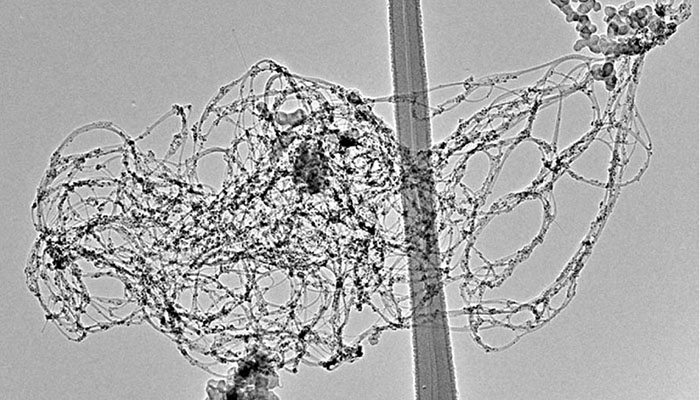Just a few years ago, carbon nanotubes were front and center of discussions around the safety of engineered nanomaterials. These days, not so much.
So what happened? Did we do the science and discover that they’re just as safe as any other form of carbon? Or did they simply slip off the safety radar?
In this month’s edition of the Journal Nature Nanotechnology, I take a look at where the state of the science is.
And the verdict? Used responsibly, the health risks of carbon nanotubes can be reduced. But this remains a material that could cause substantial problems in the wrong hands.
The article can be accessed in full from the link below if you are in the US (if you hit a paywall and would like to read it, let me know).
Are we ready for spray-on carbon nanotubes?
As artists and manufacturers explore the use of spray-on carbon nanotube coatings, Andrew D. Maynard explores the state of the science around nanotube safety.
Nature Nanotechnology 11, 490-491, 2016. DOI: 10.1038/nnano.2016.99
From the article:
“[in 2015] Günter Oberdörster and co-authors published what is possibly the most comprehensive review of carbon nanotube toxicology studies to date. Focusing on inhalation of nanotubes, they document evidence of transient pulmonary inflammation, and rapid and persistent development of granulomatous lesions and interstitial fibrosis on exposure to single- and multiwalled carbon nanotubesin rodents. They cite data indicating that inhaled long and thin multiwalled carbon nanotubes can move to the lining surrounding the lungs and penetrate it, where they can potentially cause mesothelioma. Furthermore, the authors indicate that carbon nanotubes can act as a cancer promoter — with inhalation increasing the probability of developing lung cancer from exposure to other carcinogens.”
There’s a lot more in the article, but the bottom line is that the current sate of the science indicates that, if exposure to carbon nanotubes can occur, care needs to be taken.
As a side note, back in 2007 I questioned wisdom of assuming carbon nanotubes were just as safe as any other form of carbon. At the time, suppliers like Cheap Tubes classified them in Material Safety Data Sheets (MSDS) as “Synthetic Graphite”, with safe exposure levels of between 2 mg/m3 – 5 mg/3 (essentially treating carbon nanotubes as a “nuisance dust”).
In 2013, the National Institute for Occupational Safety and Health recommended an occupational exposure limit of 1 µg/m3 – a thousand times lower than what manufacturers and distributers were using at the time.
To see what’s changed, I checked Cheap Tubes current MSDS. The exposure limit for carbon nanotubes is still listed as between 2 mg/m3 and 5 mg/3 for respirable particles, and up to 15 mg/m3 for inhalable particles. So still just a nuisance dust.
Clearly, despite the science moving on, not a lot has.

